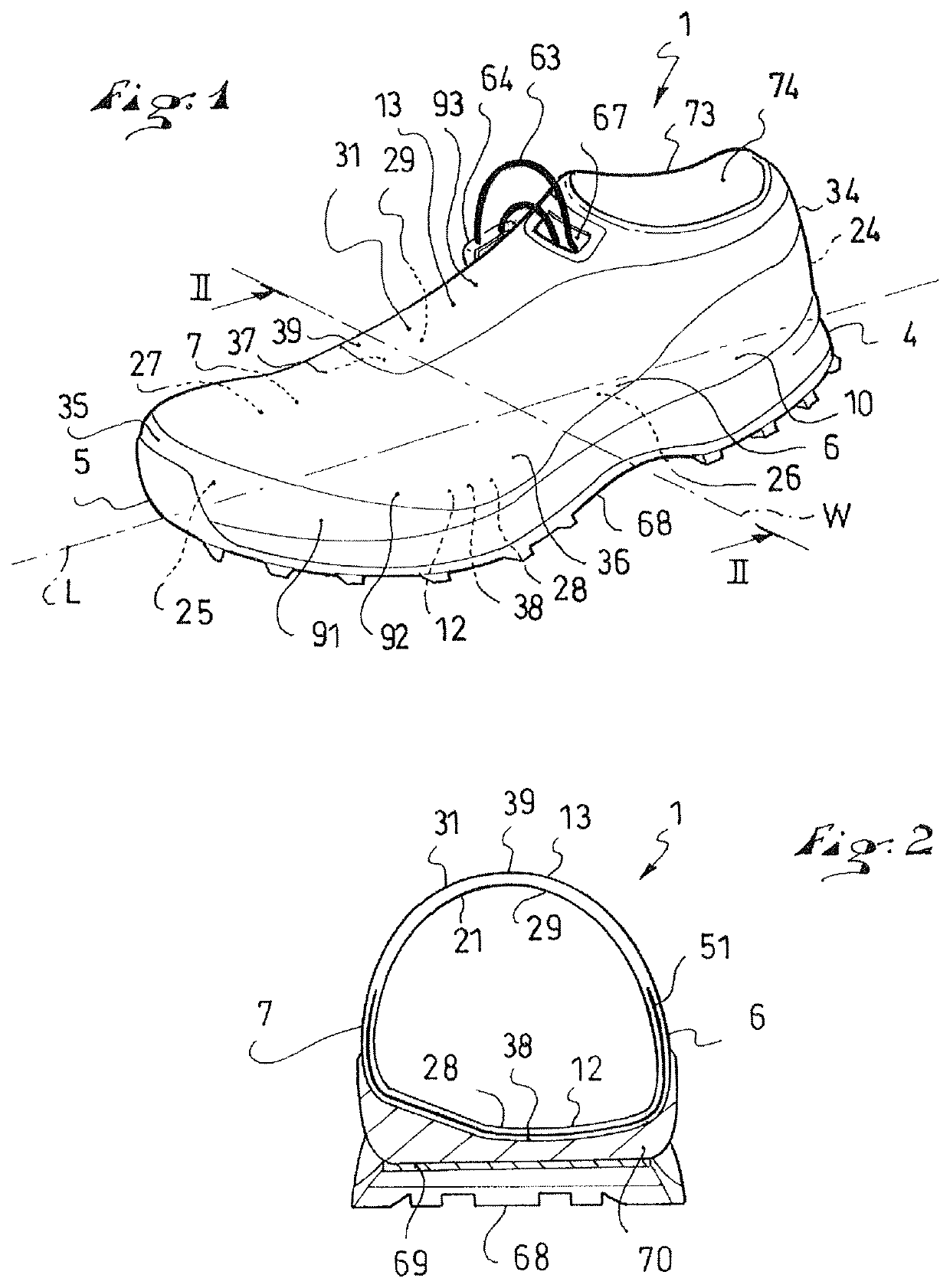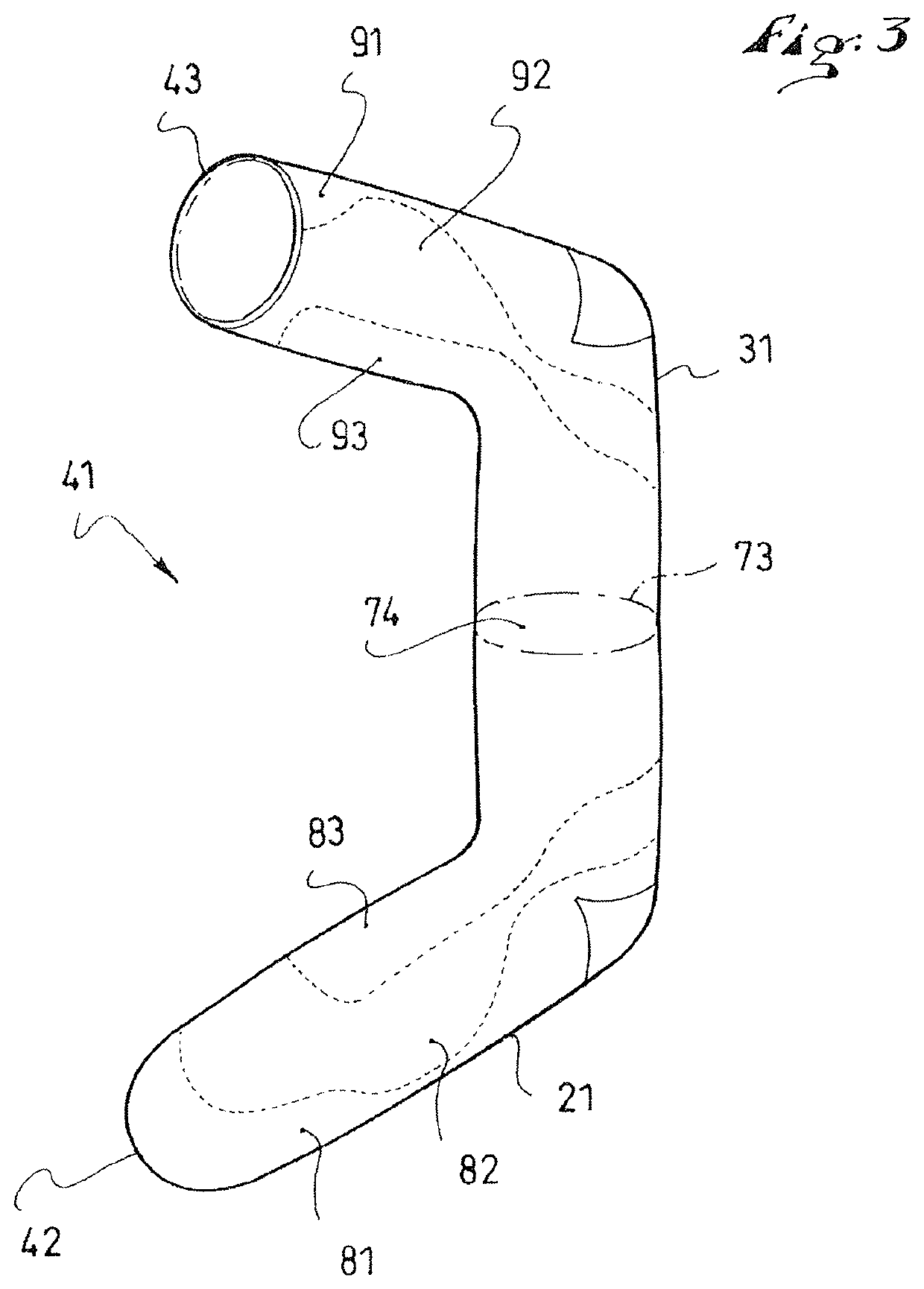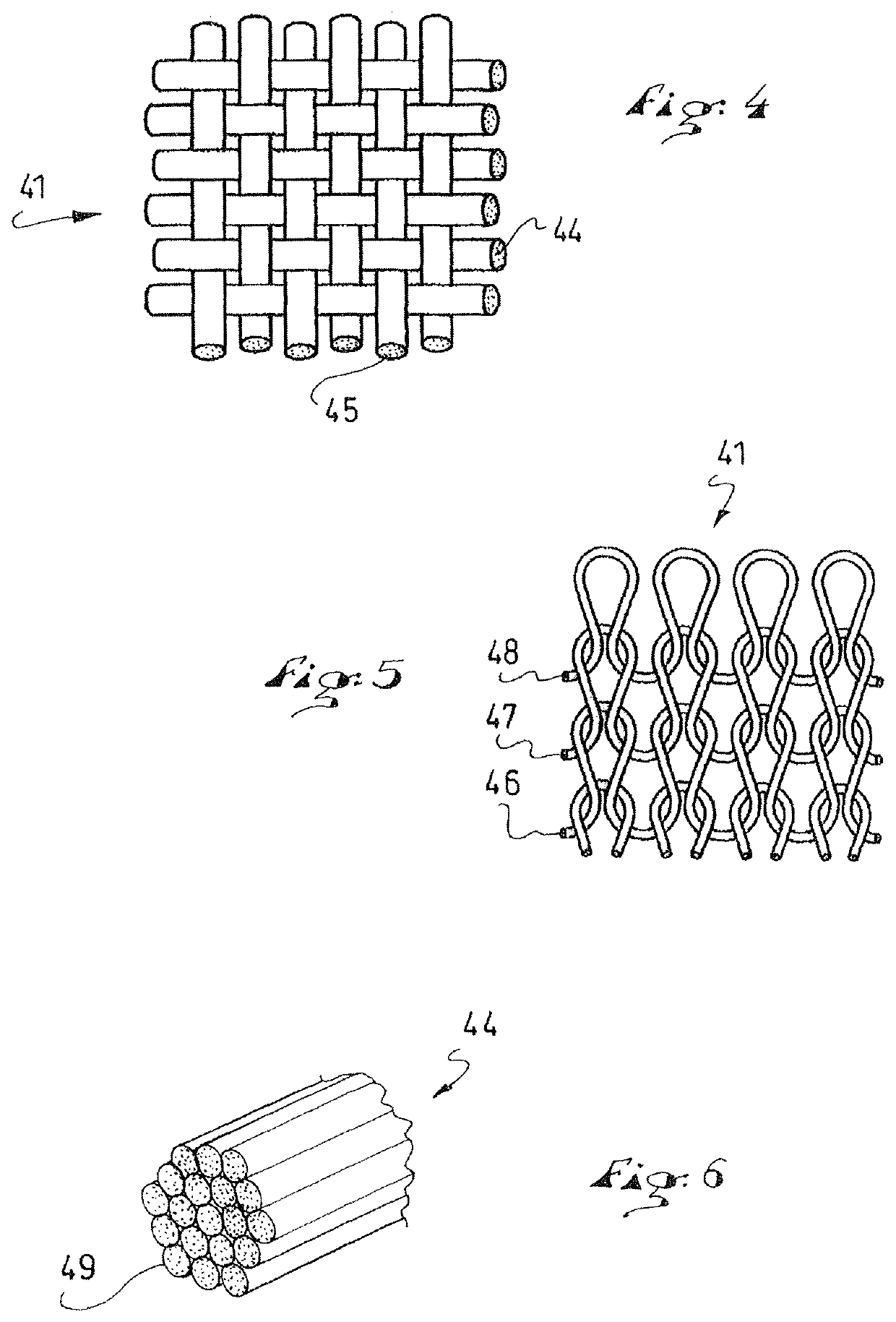Footwear item having a simplified structure
a technology of footwear and structure, applied in the field of footwear articles, can solve the problems of increasing complicated shoes manufactured using conventional techniques, and assembling and turning parts, so as to reduce the number of manufacturing operations and the time required to carry out such operations, and increase the comfort of the footwear article. , the effect of less or no discomfort for the user
- Summary
- Abstract
- Description
- Claims
- Application Information
AI Technical Summary
Benefits of technology
Problems solved by technology
Method used
Image
Examples
first embodiment
[0042]The first embodiment is described below with reference to FIGS. 1 to 9.
[0043]As shown in FIGS. 1 and 2, an article of footwear 1 is provided to receive the foot of the user. For convenience, the article of footwear 1 will be considered as a shoe in the following description although, as will be shown in detail, its structure is completely unusual. Thus, the shoe 1 extends lengthwise along a longitudinal direction L, between a rear end or heel 4 and a front end or tip 5, and widthwise along a transverse direction W, between a lateral side 6 and a medial side 7.
[0044]As shown, the upper of the shoe 1 comprises a lower portion 10, provided to surround the foot, and includes no upper portion. Alternatively, however, the invention encompasses a shoe that includes both a lower portion and an upper portion, the latter being provided to surround the ankle and possibly the lower leg.
[0045]According to the first embodiment described, the shoe 1 extends height-wise from a base 12, or bot...
second embodiment
[0078]Thus, the second embodiment, according to FIGS. 10 and 11, features an article of footwear or shoe 1 with a rear end 4 and a front end 5, a lateral side 6 and a medial side 7, or a base 12, or bottom side, and an upper end 13, or top side.
[0079]What is specific to the second embodiment is the structure of the preform or sleeve 41. The sleeve extends well between a first end 42, which is for example closed, and a second open end 43. However, the sleeve 41 is sized to obtain the first casing 21, or envelope, only, to the exclusion of any other casing or casing subdivision. Accordingly, it is the open end 43 of the first casing 21 which alone demarcates the foot insertion opening 74. The shoe 1 according to the second embodiment therefore comprises the first casing 21, or envelope, and the reinforcement 51, with its tightening device 61, to the exclusion of any additional casing or envelope. It can also be said that the reinforcement 51 covers the first casing 21. This means that...
third embodiment
[0080]For the third embodiment according to FIG. 12, the sleeve 41, which extends between a first closed end 42 and a second open end 43, is used to obtain two casings 21, 31, or envelopes. The portion of the sleeve for the first casing 21 is bent, whereas the portion of the sleeve for the second casing is straight.
PUM
| Property | Measurement | Unit |
|---|---|---|
| thickness | aaaaa | aaaaa |
| thickness | aaaaa | aaaaa |
| length | aaaaa | aaaaa |
Abstract
Description
Claims
Application Information
 Login to View More
Login to View More - R&D
- Intellectual Property
- Life Sciences
- Materials
- Tech Scout
- Unparalleled Data Quality
- Higher Quality Content
- 60% Fewer Hallucinations
Browse by: Latest US Patents, China's latest patents, Technical Efficacy Thesaurus, Application Domain, Technology Topic, Popular Technical Reports.
© 2025 PatSnap. All rights reserved.Legal|Privacy policy|Modern Slavery Act Transparency Statement|Sitemap|About US| Contact US: help@patsnap.com



